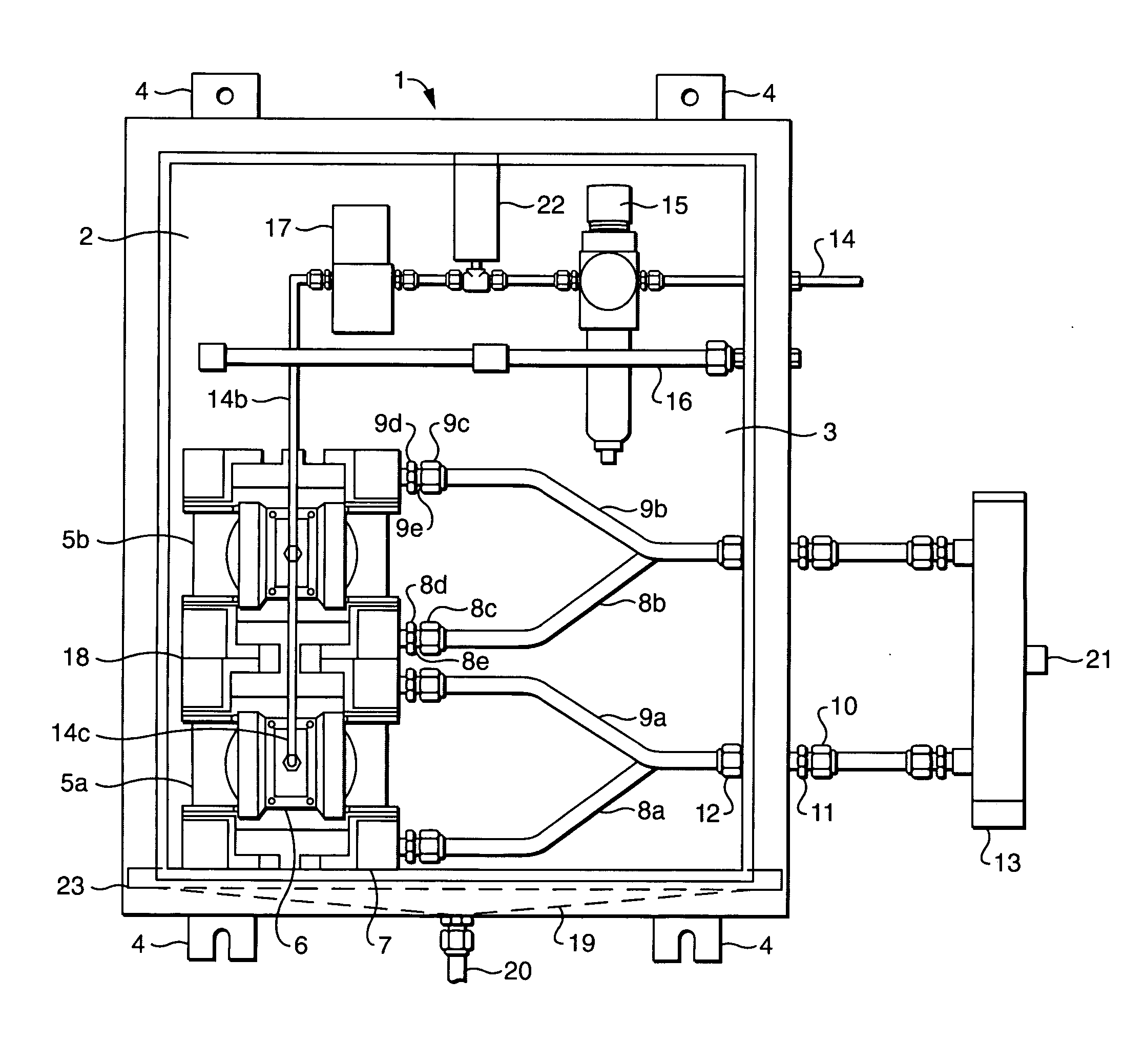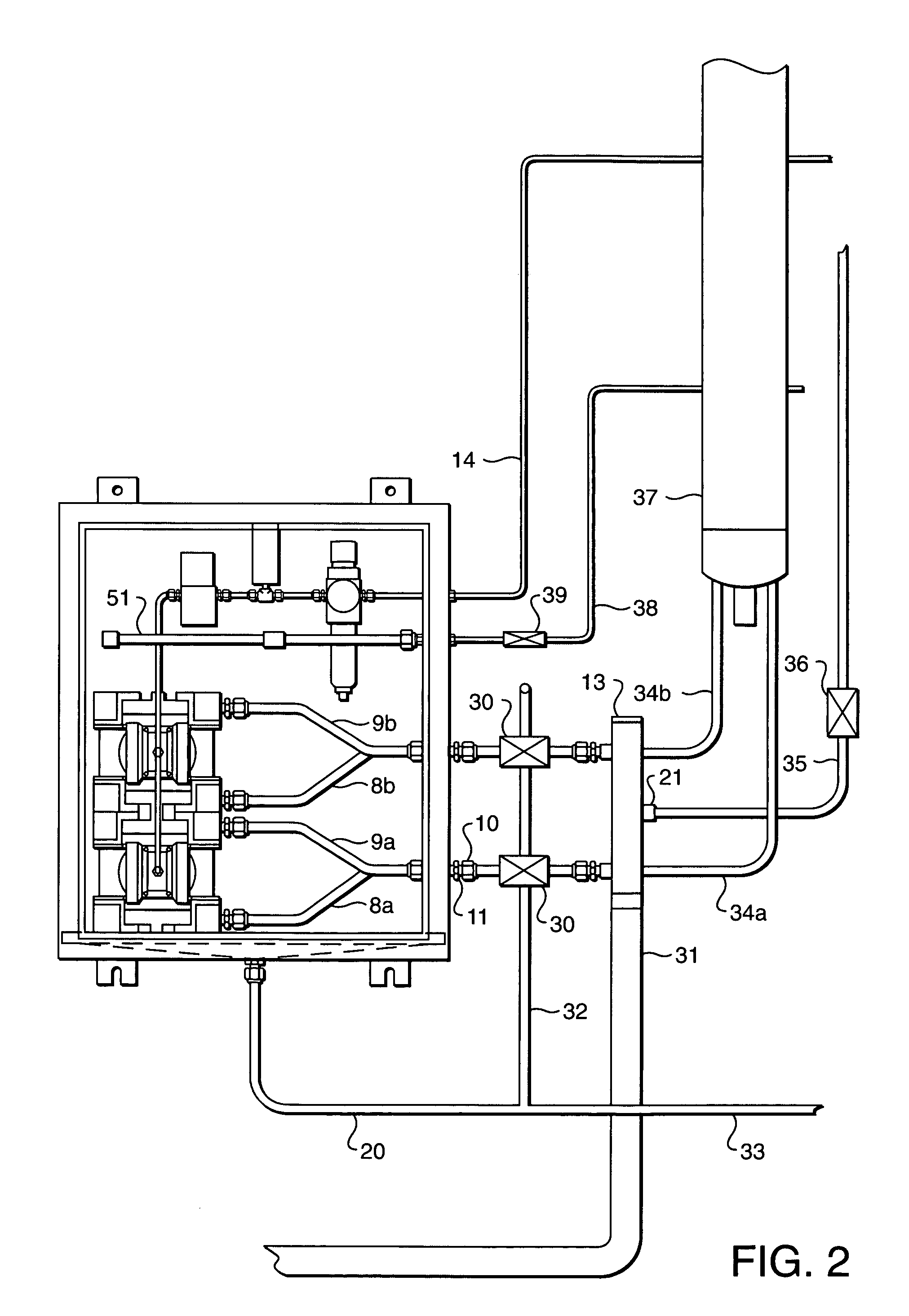Apparatus for dispensing hazardous chemicals
- Summary
- Abstract
- Description
- Claims
- Application Information
AI Technical Summary
Benefits of technology
Problems solved by technology
Method used
Image
Examples
Embodiment Construction
[0019] In conventional dispensing of hazardous chemicals, an apparatus typically includes a pump mounted on a frame or in an enclosure connected to a source of chemical, usually a drum or tote via flexible plastic tubes. Couplings are generally plastic involving attachment of a plastic hose of one type of material joined to a nipple of a second type of plastic and secured by a hose clamp. Alternatively, hard plumbed PVC piping may be employed with standard PVC unions, T fittings, and elbows. The most common type of pump for dispensing liquids ranging in volume from a few ounces to several gallons is a diaphragm or double diaphragm pump. Movement of the internal shuttle causes substantial vibration. Over a period of prolonged use pump vibrations weaken the seals between components causing plastic hoses to loosen and be displaced, and union and couplings to fracture and leak.
[0020] Because of the severe consequences to persons and the environment of a system failure involving hazardo...
PUM
 Login to View More
Login to View More Abstract
Description
Claims
Application Information
 Login to View More
Login to View More - R&D
- Intellectual Property
- Life Sciences
- Materials
- Tech Scout
- Unparalleled Data Quality
- Higher Quality Content
- 60% Fewer Hallucinations
Browse by: Latest US Patents, China's latest patents, Technical Efficacy Thesaurus, Application Domain, Technology Topic, Popular Technical Reports.
© 2025 PatSnap. All rights reserved.Legal|Privacy policy|Modern Slavery Act Transparency Statement|Sitemap|About US| Contact US: help@patsnap.com



